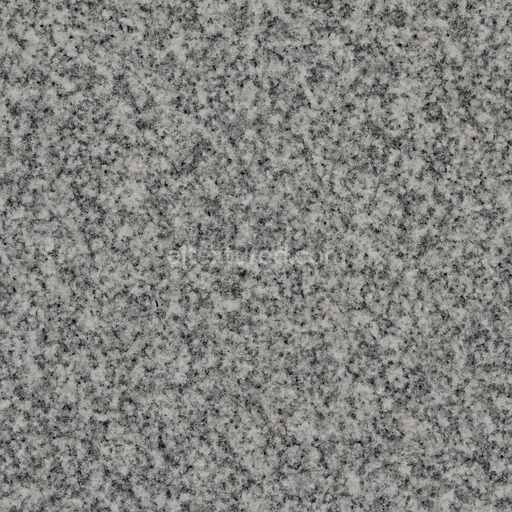The smooth granite texture seamless high resolution up to 8k presents an exceptionally detailed and realistic stone surface, ideal for a wide range of 3D applications. This texture captures the natural composition of granite, a durable igneous rock primarily composed of interlocking mineral grains such as quartz, feldspar, and mica. The surface finish is finely polished, emphasizing the stone’s subtle reflectivity and smooth tactile quality while preserving natural micro-variations and slight porosity. These fine details, including the grain orientation and mineral inclusions, are carefully rendered to ensure that the texture maintains clarity and cohesion even when applied to large UV islands. The color palette reflects the natural pigments found in granite, including soft greys, muted whites, and occasional flecks of darker mineral deposits, which translate accurately into the BaseColor/Albedo channel for authentic visual fidelity.
From a materials standpoint, the seamless granite texture’s PBR channels have been meticulously crafted to represent the physical characteristics of polished stone. The Normal map captures the subtle surface undulations and micro-roughness that break up reflections and add depth without overemphasizing texture noise. Roughness values are finely tuned to reflect the semi-glossy finish typical of smooth granite, balancing specular highlights and diffuse reflection. The Metallic channel remains neutral, as granite is non-metallic, while Ambient Occlusion enhances crevices and grain boundaries to provide natural shadowing that accentuates structural consistency. Height or displacement maps are included to simulate slight surface relief and granular detail, which is especially effective for cinematic renders and level dressing where tactile realism is paramount.
Designed for high-end production pipelines, this tileable smooth granite texture seamless high resolution up to 8k is fully compatible with Blender, Unreal Engine, and Unity, making it an excellent choice for real-time scenes, material studies, and architectural visualization. Its high resolution ensures that even close-up views retain sharpness and detail without pixelation, supporting large-scale environments and complex geometry. For optimal results, a practical tip is to adjust the UV scale carefully to balance detail density, and to subtly combine this texture with a light ambient occlusion pass and a gentle normal map overlay. This enhances surface breakup and adds realism without oversharpening, ensuring the material looks convincing across various lighting conditions and rendering engines.
The AI-generated smooth granite texture seamless high resolution up to 8k offers a realistic stone texture with a 3D preview that highlights its seamless smooth granite texture seamless high resolution up to 8k quality for advanced PBR applications.
How to Use These Seamless PBR Textures in Blender
This guide shows how to connect a full PBR texture set to Principled BSDF in Blender (Cycles or Eevee). Works with any of our seamless textures free download, including PBR PNG materials for Blender / Unreal / Unity.
What’s inside the download
*_albedo.png — Base Color (sRGB)*_normal.png — Normal map (Non-Color)*_roughness.png — Roughness (Non-Color)*_metallic.png — Metallic (Non-Color)*_ao.png — Ambient Occlusion (Non-Color)*_height.png — Height / Displacement (Non-Color)*_ORM.png — Packed map (R=AO, G=Roughness, B=Metallic, Non-Color)

Quick start (Node Wrangler, 30 seconds)
- Enable the addon: Edit → Preferences → Add-ons → Node Wrangler.
- Create a material and select the Principled BSDF node.
- Press Ctrl + Shift + T and select the maps
albedo, normal, roughness, metallic (skip height and ORM for now) → Open.
The addon wires Base Color, Normal (with a Normal Map node), Roughness, and Metallic automatically.
- Add AO and Height using the “Manual wiring” steps below (5 and 6).
Manual wiring (full control)
- Create a material (Material Properties → New) and open the Shader Editor.
- Add an Image Texture node for each map. Set Color Space:
- Albedo → sRGB
- AO, Roughness, Metallic, Normal, Height, ORM → Non-Color
- Connect to Principled BSDF:
albedo → Base Colorroughness → Roughnessmetallic → Metallic (for wood this often stays near 0)normal → Normal Map node (Type: Tangent Space) → Normal of Principled.
If details look “inverted”, enable Invert Y on the Normal Map node.
- Ambient Occlusion (AO):
- Add a MixRGB (or Mix Color) node in mode Multiply.
- Input A =
albedo, Input B = ao, Factor = 1.0.
- Output of Mix → Base Color of Principled (replaces the direct albedo connection).
- Height / Displacement:
Cycles — true displacement
- Material Properties → Settings → Displacement: Displacement and Bump.
- Add a Displacement node: connect
height → Height, set Midlevel = 0.5, Scale = 0.02–0.08 (tune to taste).
- Output of Displacement → Material Output → Displacement.
- Add geometry density (e.g., Subdivision Surface) so displacement has polygons to work with.
Eevee (or lightweight Cycles) — bump only
- Add a Bump node:
height → Height.
- Set Strength = 0.2–0.5, Distance = 0.05–0.1, and connect Normal output to Principled’s Normal.
Using the packed ORM texture (optional)
Instead of separate AO/Roughness/Metallic maps you can use the single *_ORM.png:
- Add one Image Texture (Non-Color) → Separate RGB (or Separate Color).
- R (red) → AO (use it in the Multiply node with albedo as above).
- G (green) → Roughness of Principled.
- B (blue) → Metallic of Principled.
UVs & seamless tiling
- These textures are seamless. If your mesh has no UVs, go to UV Editing → Smart UV Project.
- For scale/repeat, add Texture Coordinate (UV) → Mapping and plug it into all texture nodes.
Increase Mapping → Scale (e.g., 2/2/2) to tile more densely.
Recommended starter values
- Normal Map Strength: 0.5–1.0
- Bump Strength: ~0.3
- Displacement Scale (Cycles): ~0.03
Common pitfalls
- Wrong Color Space (normals/roughness/etc. must be Non-Color).
- “Inverted” details → enable Invert Y on the Normal Map node.
- Over-strong relief → lower Displacement Scale or Bump Strength.
Example: Download Wood Textures and instantly apply parquet or rustic planks inside Blender for architectural visualization.
To add the downloaded texture, go to Add — Texture — Image Texture.

Add a node and click the Open button.

Select the required texture on your hard drive and connect Color to Base Color.


